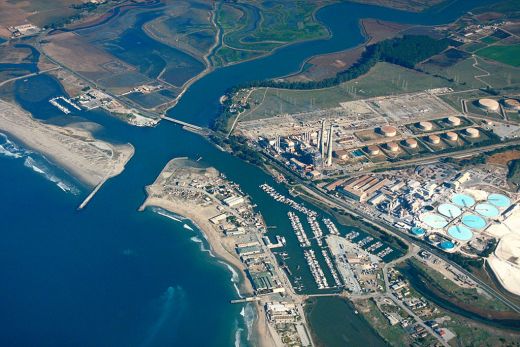
Pacific Gas & Electric (PG&E) has launched a community microgrid program that aims to help California communities design and build multicustomer microgrids serving critical facilities and vulnerable groups.
The Community Microgrid Enablement Program offers technical and financial support for qualifying projects in areas with the greatest energy resilience needs.
“Community microgrids will play a key role in PG&E’s ongoing efforts to harden our electrical system and enhance local grid resilience for customers throughout our service area in northern and central California,” Fong Wan, PG&E’s senior vice president for energy policy and procurement, said April 13.
The program, approved by the California Public Utilities Commission last month, grew out of the commission’s efforts to support the commercialization of microgrids, as required by a state law, SB 1339.
Last summer, the commission directed California’s investor-owned utilities to speed up their microgrid plans in an effort to reduce the effects of power outages related to wildfires.
Through the community microgrid program, PG&E will help communities explore their options for microgrids covering multiple critical facilities, help guide applicants through the technical study process for approving microgrids and help them get the microgrids online. The program is set to run through next year.
The commission authorized PG&E to spend up to $27 million in matching funds to make the distribution system upgrades needed to bring the community microgrids online. The program reserves $9 million a year for disadvantaged and vulnerable communities. Usually, the upgrade costs are paid entirely by the owner of the microgrid.
The program places a priority on projects serving disadvantaged communities, critical facilities such as hospitals, and areas with a higher likelihood of public safety power shutoffs or other significant power outage events, as well as projects with higher levels of renewable energy, according to PG&E.
Redwood Coast community microgrid
The first project under the program is the 2.25-MW Redwood Coast Airport Microgrid, which is being developed in collaboration with PG&E, the Redwood Coast Energy Authority, Schatz Energy Research Center at Humboldt State University, Humboldt County and Schweitzer Engineering Laboratories.
The microgrid will serve 18 customer meters, including the Arcata-Eureka Airport and a US Coast Guard Air Station. It is expected to be operating by the end of the year, according to PG&E.
PG&E said it has heard from other communities interested in setting up multicustomer microgrids through the new program, including the Yurok Tribe, located on the Klamath River on California’s North Coast.
“The Tulley Creek microgrid is a key piece of infrastructure that will dramatically increase the energy resilience and disaster preparedness of the Yurok Tribe on the upper half of the reservation,” said Michael Gerace, planning director for the Yurok Tribe Department of Planning and Community Development.
About half of the homes in the northern part of the reservation lack access to grid power, according to an energy plan prepared for the tribe by the Schatz Energy Research Center. The center recommended a microgrid with 52 kW of solar and a 100-kW battery system to support an administrative building, a fire station and a transportation building.



